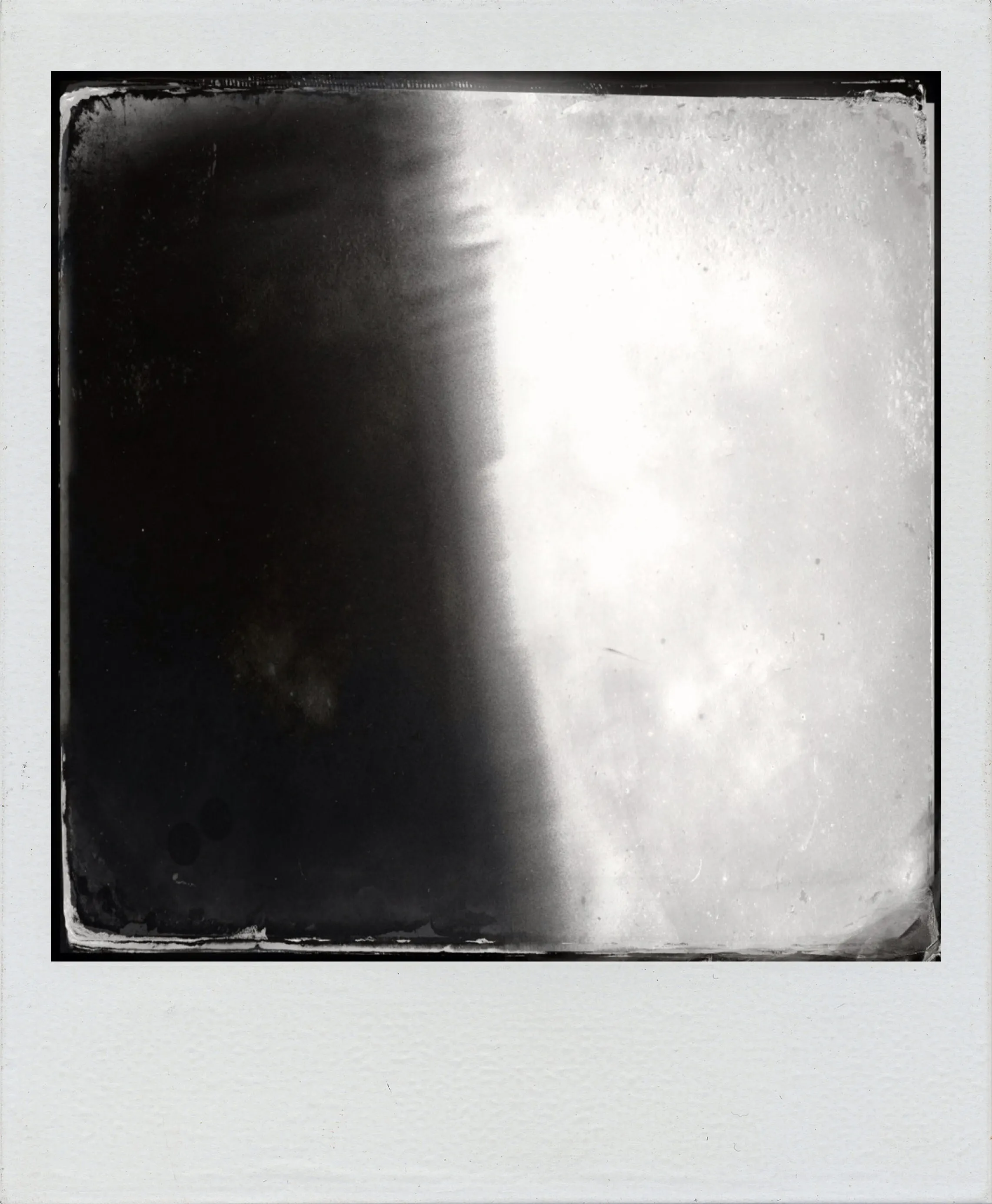Picture Plane Unbound

This work investigates the dissolution of the picture plane through stark tonal contrast and minimal form. It challenges traditional spatial depth by emphasizing surface, light, and the photographic artifact.
In Picture Plane Unbound, the conventional limits of photographic space are disrupted, pushing the viewer to reconsider the flatness and materiality of the image. The composition is stark: a monochrome surface split nearly in half by a vertical gradient, shifting from deep black on the left to luminous white on the right. The image is framed within a Polaroid border, referencing a specific moment in analog photographic history while simultaneously refusing nostalgic legibility.
The most immediate visual characteristic is the sharp tonal division bisecting the frame. This gradient is not smooth, but rather transitional with texture and slight artifacts, evoking a sense of process and chemical unpredictability. It draws attention to the surface of the image, not what the image depicts. By denying representational content, the photograph engages directly with its own physical construction—light, emulsion, chemical exposure—inviting questions not of what it shows, but how it came to exist.
The framing device—a classic Polaroid border—further complicates interpretation. It simultaneously anchors the image in the vernacular of instant photography and heightens the abstraction by underscoring the photograph’s boundaries. This suggests a conceptual tension: a picture that appears to escape its own frame while being forcibly contained by it. The title, Picture Plane Unbound, makes this conflict explicit. The work is both within and beyond its literal and metaphorical limits.
Visually, the image can be read as a minimalist study in formal contrast: black versus white, shadow versus illumination, density versus openness. However, its deeper impact lies in how it destabilizes the viewer’s sense of what an image should do. There is no subject in a traditional sense—no figure, no horizon, no perspective cues—yet the piece remains intensely photographic. It reminds us that photography is not merely a medium for capturing the visible world but is also a material process shaped by light, time, and chance.
Conceptually, Picture Plane Unbound aligns with mid-20th-century movements in abstraction, particularly the work of photographers and painters who questioned the illusionistic function of the picture plane. It calls to mind the flatness debates in modernist art criticism, where the surface of the canvas—or in this case, the print—became the primary field of exploration. But here, the photographic process itself becomes the subject, echoing the work of artists who experimented with light exposure, chemical manipulation, and camera-less techniques to reveal the inner mechanics of image-making.
On a cultural level, the image speaks to a broader anxiety about representation in a post-truth era. By withholding narrative, context, or recognizable content, the photograph resists appropriation and oversimplification. It invites prolonged viewing, rewarding attention to minute variations in texture and tone that might otherwise be dismissed as “noise.” This is particularly resonant in a digital age dominated by images designed for rapid consumption and immediate recognition.
Picture Plane Unbound ultimately operates as both object and concept. It is a photograph about photography, a meditation on the act of seeing, and a confrontation with the limits of perception. Its stripped-down visual language and tactile presence insist on a slower, more deliberate engagement—one that acknowledges the photograph not as window, but as wall.
Essay written: May 2025